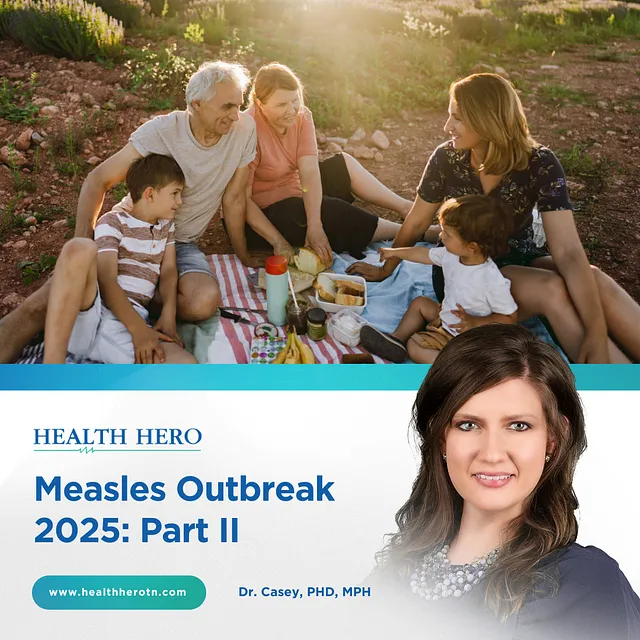There are multiple challenges the world faces when it comes to health. They can range from outbreaks of preventable diseases to a lack of physical activity. But in recent years, vaccine hesitancy has emerged as one of the healthcare system’s biggest challenges. An assessment by the National Library of Medicine found that 6% to 25% of parents may be vaccine-hesitant. Despite the success of vaccines in preventing illness and saving lives, some individuals are still on the fence about vaccines.
Vaccine hesitancy is a complex phenomenon that encompasses a variety of factors. Misinformation and mistrust in the medical establishment play a role along with the rise of social media, allowing for the ability to spread accurate information and falsehoods. Conspiracy theories and misleading narratives can gain traction quickly and create doubt in those who might otherwise choose to vaccinate.
It’s understandable for people to have their concerns but it’s important to remember that vaccines have been instrumental in preventing and controlling infectious diseases, saving millions of lives globally. The technology used to create vaccines has seen significant advancements, allowing for better and safer development.
Traditional vs. Modern Vaccine Technologies:
There are several approaches when it comes to developing a vaccine, including inactivated or attenuated pathogens. While traditional methods remain effective, modern vaccine technologies offer distinct advantages. One of these is recombinant DNA technology, where specific genes from the pathogen are inserted into a harmless virus or bacterium, stimulating an immune response without causing illness. This approach allows for the targeted design of vaccines with improved safety profiles.
Additionally, mRNA vaccines represent a groundbreaking development in vaccine technology. The COVID-19 pandemic highlighted the potential of mRNA vaccines, such as the Pfizer-BioNTech and Moderna vaccines. Unlike traditional vaccines that use weakened or inactivated pathogens, mRNA vaccines teach cells to produce a harmless piece of the virus (spike protein) to trigger an immune response. This allowed for faster vaccine development and production.
Innovative Vaccine Development:
DNA vaccines are rapidly developing and creating a promising future for vaccines. Instead of using proteins or inactivated viruses, DNA vaccines introduce a small piece of DNA into cells that allows it to produce a viral or bacterial protein. This stimulates an immune response, like traditional vaccines.
Another safe and highly effective method of vaccine development is VLP vaccines. This mimics the structure of viruses without containing genetic material. These vaccines help the body build an immune response by presenting it with a virus-like structure, training the immune system to recognize and fight the actual virus. VLP technology has successfully developed vaccines for hepatitis B and human papillomavirus (HPV).
A vaccine that constantly needs to be reformulated each year is the seasonal influenza vaccine. Scientists develop new vaccines each season so that they align with the currently circulating virus strains. Researchers are working on developing universal influenza vaccines to eliminate the need for yearly updates.
Debunking Myths Surrounding Vaccine Safety:
Despite innovative and technological advances in vaccines, there remain many myths and misinformation about vaccines that are helping to fuel hesitancy.
One of the well-known and debunked myths is the link between vaccines and autism. This mainly surrounds the MMR (measles, mumps, and rubella) vaccine, vaccines that contain thimerosal, or too many vaccines. Numerous studies have thoroughly investigated this claim and found no credible evidence supporting a connection between vaccines and the development of autism. The original study suggesting a link has been discredited and retracted, meaning that the paper isn’t part of the scientific record because it was found to be based on scientific misconduct.
Another common misconception is that vaccines contain harmful substances that can cause adverse reactions. Any vaccine can cause side effects, however, most of these symptoms are minor such as a sore arm or low-grade fever. Vaccines undergo meticulous tests for safety, and any ingredients used are thoroughly evaluated. Common vaccine components include weakened or inactivated viruses, proteins, adjuvants (which enhance the body’s immune response), and preservatives. The amounts of these ingredients are well below established safety thresholds, and their inclusion is essential for ensuring vaccine efficacy and stability.
Overall, the way to tackle vaccine hesitancy is through education and research. it is crucial to recognize the impact that vaccines have had on preventing and controlling infectious diseases not only in the United States but around the world. Recognizing myths and misinformation, as well as looking at the proven track record of success and the continued advancements of vaccine technologies, will help build confidence and reduce hesitancy.
Sources
National Library of Medicine: State of Vaccine Hesitancy in the United States
Centers for Disease Control and Prevention: How Vaccines are Developed and Approved for Use
Centers for Disease Control and Prevention: Possible Side Effects from Vaccines


